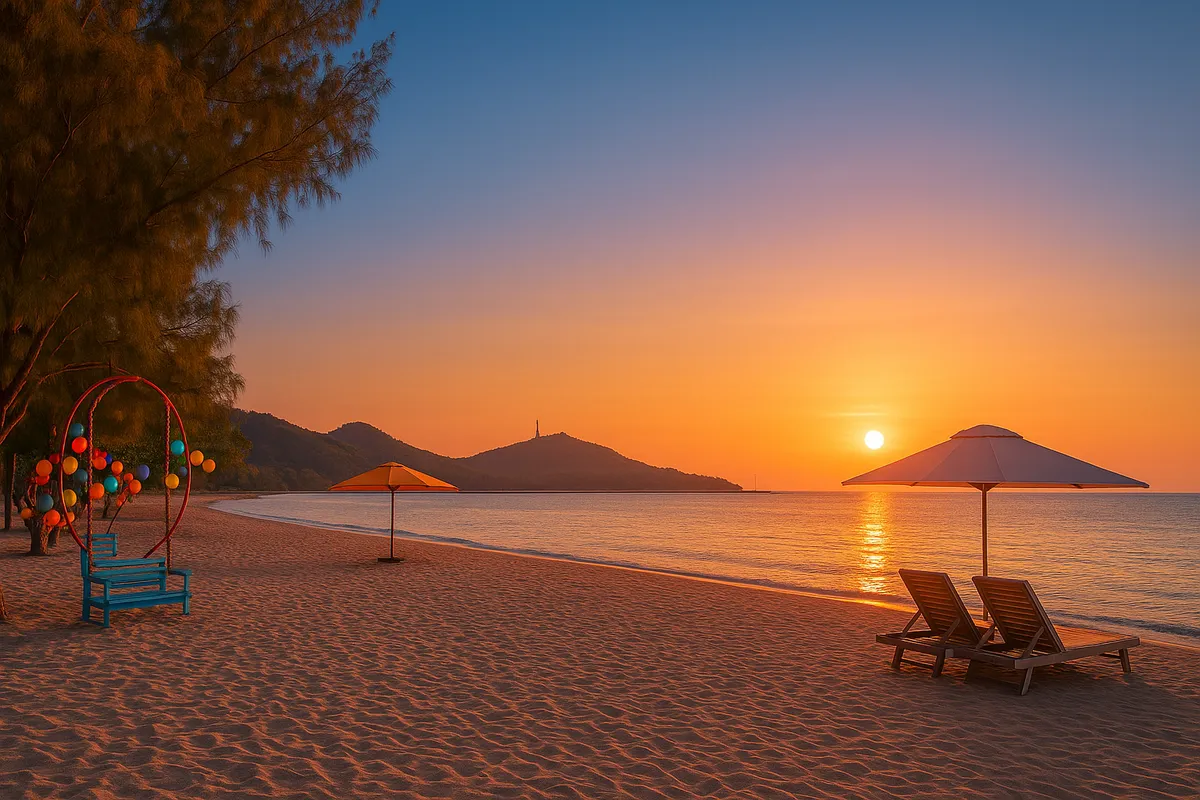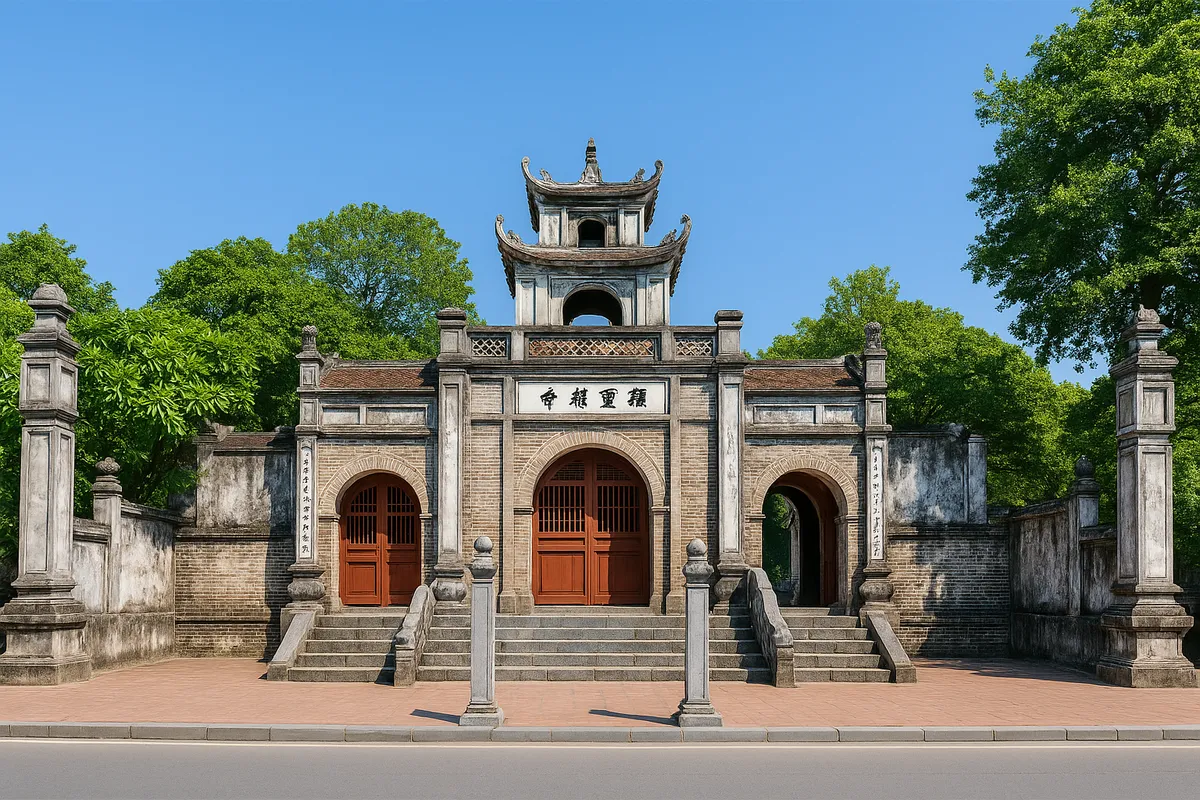Cua Tung Beach is as beautiful as a picture and its untold secrets
- Sunday, Apr 20, 2025, 09:55 (GMT+7)
Cua Tung Beach is as beautiful as a picture and its untold secrets
When the first rays of dawn softly brush the sea, Cua Tung awakens like a shimmering silk ribbon unfurling gently between sky and earth. The water isn’t just blue—it carries the tender hue of aquamarine, glistening under the morning light like smiling eyes. The breeze, salty from the faraway ocean, weaves through rows of whispering casuarina trees, like a lullaby from a mother’s voice in a forgotten fairytale, inviting travelers into a world that feels both unfamiliar and strangely intimate—a place where every sense is stirred.
Located in An Duc village, Vinh Quang commune, Vinh Linh district of Quang Tri province, Cua Tung has long been known as the “Queen of Beaches” for its pristine, poetic charm. There are no towering resorts here, no bustling tourist crowds. Cua Tung welcomes with simplicity, untouched beauty, and gentle solitude. Its shoreline stretches endlessly, the sand as fine as powdered sugar, soft as a maiden’s skin in spring. The waves don’t crash—they breathe, in rhythm with the heartbeat of the earth, like a mother sea whispering secrets to her child. Each footprint on the sand feels like a trace left on memory—light, fleeting, and crystal clear.
At Cua Tung, two rocky capes—Mui Si and Mui Lai—reach out into the sea like great arms embracing the shore. Because of them, the waves remain calm year-round, unlike the tempestuous tides of other coasts. The water here is glass-clear, revealing golden sands below and schools of silver fish darting like shards of light. Children splash freely in the crystalline shallows, while adults find solace simply standing still, feeling burdens lift as if swept away by the sea itself.
But Cua Tung is not just a beach of blue water and white sand. What sets it apart is the rich layering of culture, memory, and myth carried by every wave. Once a luxurious retreat for French colonial officers, the area still holds echoes of the past in its quiet, timeworn villas nestled under swaying coconut palms. Cua Tung offers not noise, but nostalgia; not spectacle, but serenity. It is where one retreats not just from the world—but into oneself.
Nearby, the Ben Hai River flows silently, like a historical scar not yet fully healed. Once dividing a country in two, the river today runs like a tender story—a sad fairy tale that must never be forgotten. Not far from the shoreline lies the Vinh Moc Tunnels, carved beneath the earth during the war. An entire village lived underground here for years, a powerful reminder of resilience and the quiet, unyielding strength of the people of Vinh Linh, who chose to keep living even when the surface was no longer safe.
Cua Tung holds secrets not found in guidebooks. Few know that its name derives from the place where the Ben Hai River meets the sea—a poetic confluence where fresh and salt water mix like nature’s alchemy. Fewer still have seen the sea here during the herring season, when silvery fish sparkle under moonlight and locals call it the “silver-lit night sea.” It is a real phenomenon—but feels like a dream.
The cuisine of Cua Tung, like its people, is simple yet deeply flavorful. A perfect morning begins with a bowl of Mai Xa baby clam noodles served from a street vendor by the waves. The clams, tiny but bursting with the sweetness of the sea, carry the soul of coastal Vietnam. By midday, one might stumble upon a tray of jelly seaweed cakes—cool, green, and refreshing as a sea breeze drifting through your hair. And as twilight falls, when the air grows crisp, steaming buffalo meat wrapped in la trơng leaves delivers warmth to both body and spirit.
The best time to visit Cua Tung is from April to September, when golden sunlight floods the beach and the sea glows like liquid glass. Sunset paints the horizon with hues no artist could replicate—molten amber melting into cobalt waves. From Hanoi or Ho Chi Minh City, it’s easy to reach: fly to Dong Hoi or Phu Bai airport, then travel by car. The journey is not long, just long enough for your heart to open and your mind to soften. Sometimes, all it takes is a light backpack and a willing soul to begin.
Traveling to Cua Tung is not about ticking destinations off a list. It’s for those who know how to listen to waves, to sit still and feel sea wind kiss their eyelids, to trace each barefoot step like a slow dance across velvet sand. “Not every place with golden sunshine and white sand is paradise,” someone once wrote, “but if it offers peace, then perhaps it is.” That thought lingers here.
If there’s one thing this place gently whispers to those arriving, it is this: slow down. Let the ocean tell you what words never will. Let the salty breeze smooth the creases in your soul. And when it’s time to leave, carry with you a trace of sunshine, a thread of wind, a memory steeped in salt—to remember that Cua Tung isn’t just a place, but a feeling.
As the final light of day sinks into the sea, with only soft waves lapping the shore and a trail of gold glowing on the surface, Cua Tung says goodbye. Softly. But with a depth that stays. Those who’ve been here carry something away, even if they don’t know what to call it. As one might say on Instagram, “Some places stay in your heart, even when you’re long gone.”
Cua Tung is one of those places.

 CHECKIN.VN
CHECKIN.VN








Share on